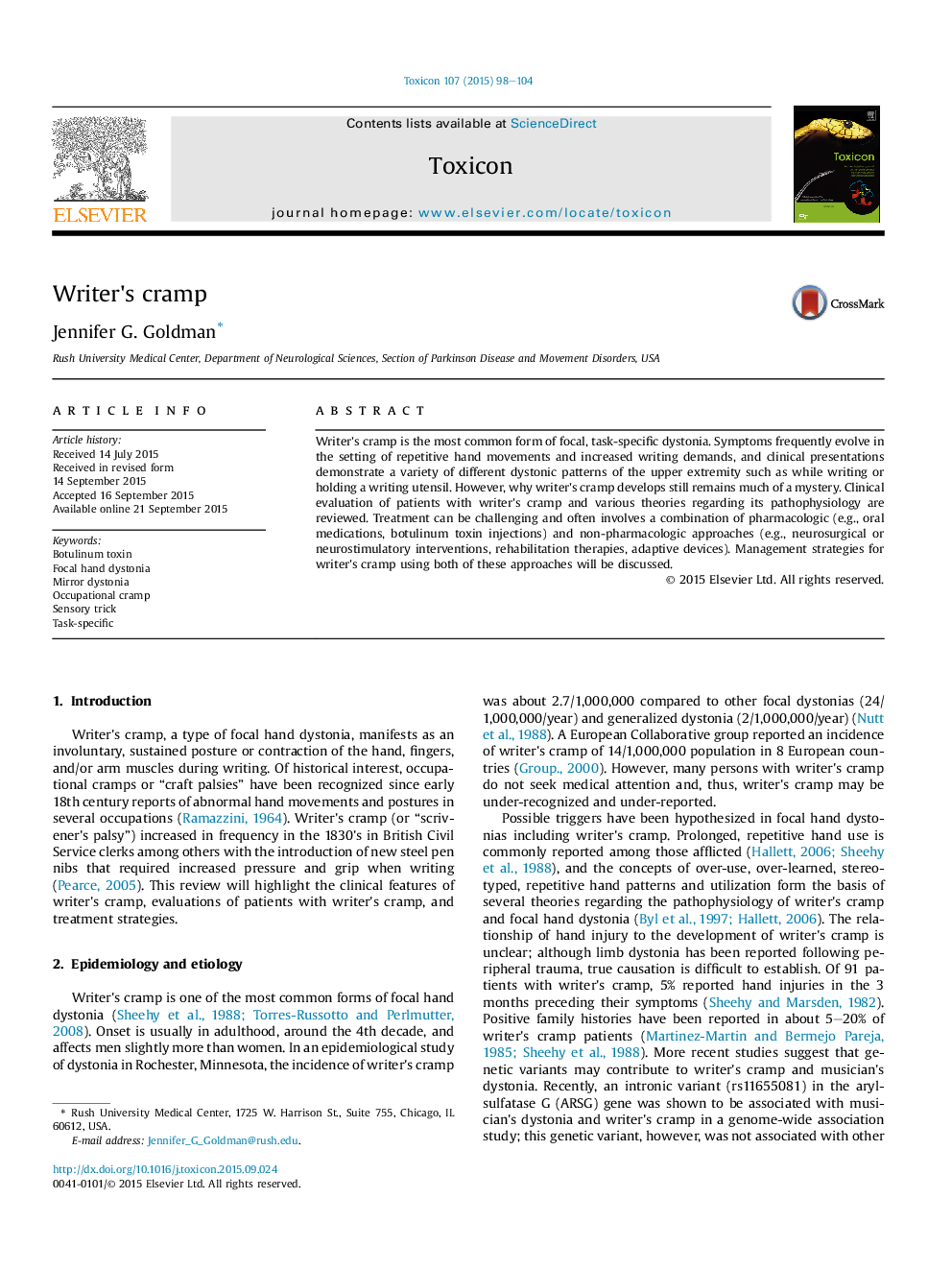| Article ID | Journal | Published Year | Pages | File Type |
|---|---|---|---|---|
| 2064346 | Toxicon | 2015 | 7 Pages |
•Writer's cramp is the most common form of focal, task-specific dystonia.•Treatments include both pharmacologic and non-pharmacologic approaches.•There have been several randomized trials of chemodenervation for writer's cramp.•Botulinum toxin injection is currently the treatment of choice for writer's cramp.•Neurosurgery, neuromodulation, and rehabilitation therapies have also been studied.
Writer's cramp is the most common form of focal, task-specific dystonia. Symptoms frequently evolve in the setting of repetitive hand movements and increased writing demands, and clinical presentations demonstrate a variety of different dystonic patterns of the upper extremity such as while writing or holding a writing utensil. However, why writer's cramp develops still remains much of a mystery. Clinical evaluation of patients with writer's cramp and various theories regarding its pathophysiology are reviewed. Treatment can be challenging and often involves a combination of pharmacologic (e.g., oral medications, botulinum toxin injections) and non-pharmacologic approaches (e.g., neurosurgical or neurostimulatory interventions, rehabilitation therapies, adaptive devices). Management strategies for writer's cramp using both of these approaches will be discussed.
